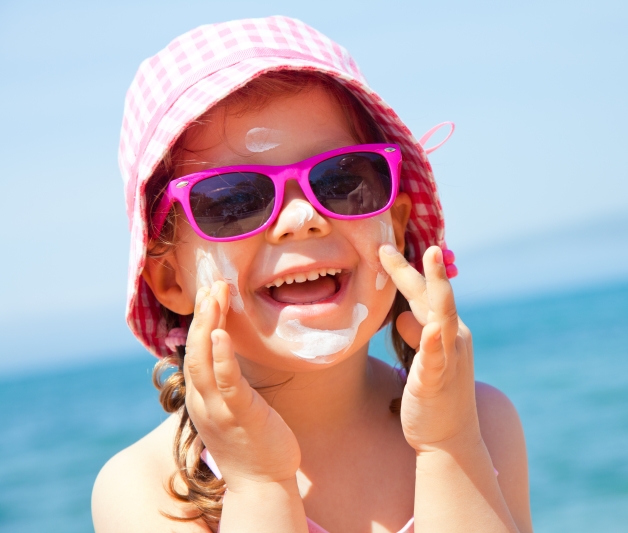As summer kicks off and your kids trade their books for boogie boards, it’s time to remember that no one is too young to take precautions against skin cancer.
Skin cancers of all types are often the results of cumulative sun exposure. The more blistering sun burns you have as a child, the higher your risk of cancer later in life. So prevention against sun cancer should really begin at birth.
Keeping babies under the age of 6 months out of the sun and correctly applying sunscreen to all children (and adults) are keys to reversing the alarming rise of skin cancer.
Melanoma, the most dangerous form of skin cancer, is on the rise in both adults and children. A 2013 study published in the journal Pediatrics suggested that diagnoses are rising among teenagers by as much as 2% each year. And last year the Journal of Investigative Dermatology published evidence that UV exposure may play a more significant role than previously thought, particularly for pediatric melanoma.
None of us parents are perfect. Even as a Hoag Medical Group pediatrician, my three children still come home from time to time with sunburn. We want to encourage our kids to go outside and play – but do so safely. Wearing tight-weave clothing, wide-brimmed hats, UV-blocking sun glasses and sunscreen that blocks both UVA and UVB rays is important. So is teaching our children to seek out shade.
Another important lesson to impart is how to apply sunscreen correctly. We should all apply a sunscreen with a Sun Protection Factor (SPF) of at least 15 a good 20 minutes before going out into the sun. We should then re-apply it generously every two hours, or more often if we are swimming or sweating.
While most sunscreens are not recommended for kids less than 6 months, a few dabs on hard-to-swaddle areas like the tip of a baby’s nose might be a good idea if shade is not easy to come by.
Even if you buy all the right products and drill into your kids the importance of sun safety, the occasional sunburn is virtually unavoidable. Kids, I’m sure it won’t shock anyone to read, don’t always follow our direction to the letter. The best thing to do is assess the sunburn six to 12 hours after exposure: If the burn blisters, or if your child experiences fevers or chills, call their doctor.
If not, put a cool compress on it or put them in a cool bath. Avoid the sun for 24 hours, and give them some acetaminophen for the pain.
Most importantly, use the experience as a teachable moment. The searing pain of sunburn is something we all want our kids to avoid. But at least that particular lesson of sun safety will be more than skin deep.
Do not hesitate to set up an appointment with one of our pediatricians at the new Hoag Health Center in Irvine if you fear your child’s sunburn is severe.



